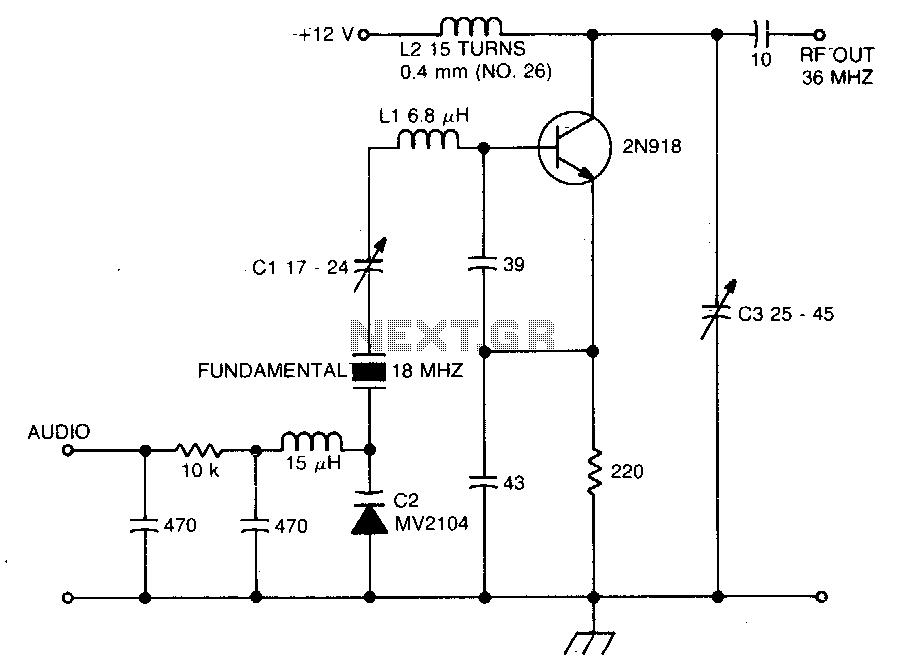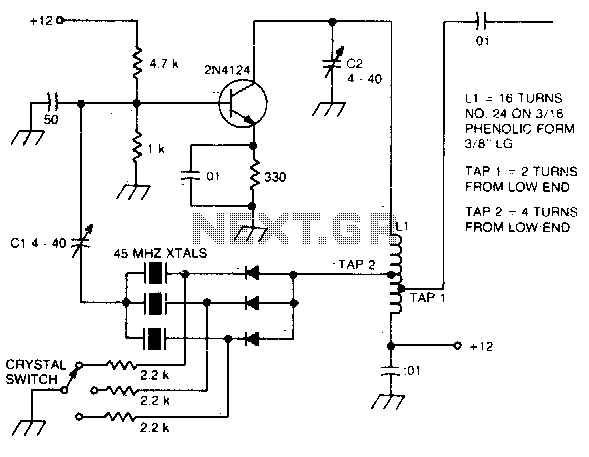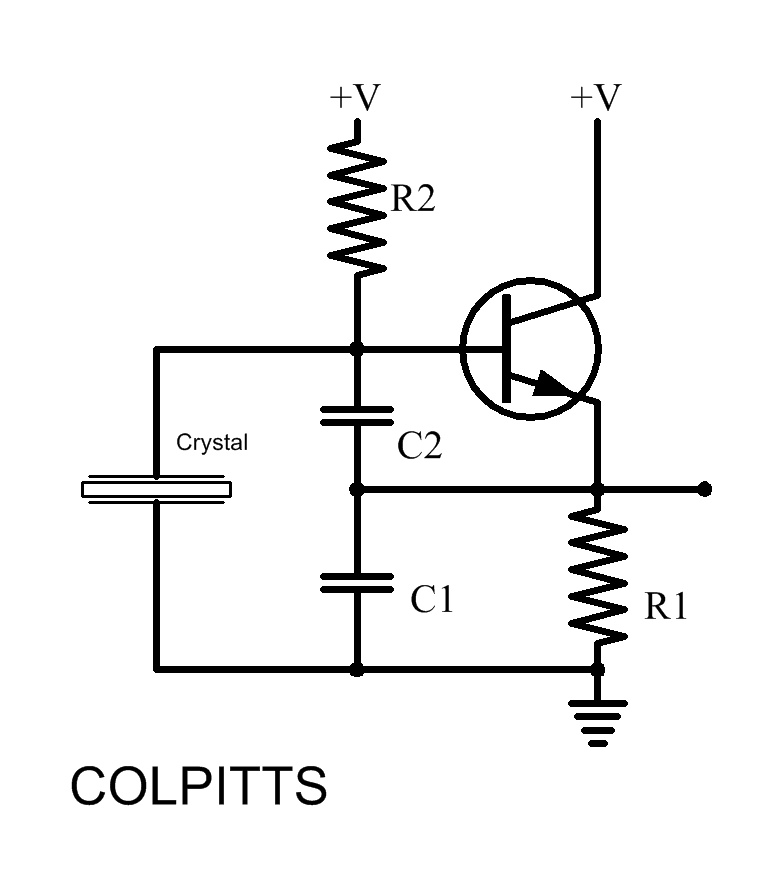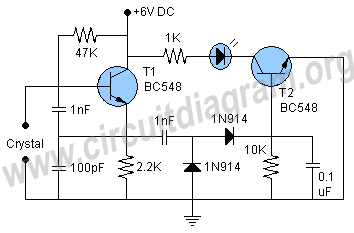
Crystal oscillator-doubler

The crystal operates into a complex load at series resonance. L1, C1, and C2 balance the crystal at zero reactance. Capacitor C1 fine-tunes the center frequency. A tank circuit consisting of L2 and C3 doubles the output frequency, allowing the circuit to function as an FM oscillator-doubler.
The described circuit utilizes a crystal oscillator configuration that achieves series resonance by balancing the reactance of the crystal with the inductance and capacitance provided by components L1, C1, and C2. The primary role of L1 is to provide inductive reactance, while C1 and C2 serve to create a capacitive reactance that offsets the inductive reactance of L1, achieving resonance at a specific frequency where the total reactance is zero. This is critical for maintaining stable oscillation and ensuring that the output frequency remains consistent.
Capacitor C1 is particularly important, as it allows for fine-tuning of the center frequency of the oscillator. This tuning capability is essential in applications where precise frequency control is required, such as in communication systems or signal processing applications.
In addition to the primary oscillator function, the circuit includes a tank circuit formed by L2 and C3, which serves a dual purpose. Primarily, this tank circuit acts as a frequency doubler, effectively generating an output frequency that is twice that of the input frequency. This is achieved through the resonance of L2 and C3, which is tuned to resonate at the doubled frequency, allowing for efficient energy transfer and amplification of the signal.
The overall architecture of this circuit exemplifies a versatile design suitable for applications requiring frequency modulation and signal doubling, making it a valuable component in advanced electronic systems. Proper selection of L1, L2, C1, and C3 values is crucial to optimize performance and achieve the desired output characteristics.The crystal operates into a complex load at series resonance. Ll, Cl, and C2 balance the crystal at zero reactance. Capacitor Cl fine-tunes the center frequency Tank circuit L2, C3 doubles the output frequency the circuit operates as an FM oscillator-doubler.
The described circuit utilizes a crystal oscillator configuration that achieves series resonance by balancing the reactance of the crystal with the inductance and capacitance provided by components L1, C1, and C2. The primary role of L1 is to provide inductive reactance, while C1 and C2 serve to create a capacitive reactance that offsets the inductive reactance of L1, achieving resonance at a specific frequency where the total reactance is zero. This is critical for maintaining stable oscillation and ensuring that the output frequency remains consistent.
Capacitor C1 is particularly important, as it allows for fine-tuning of the center frequency of the oscillator. This tuning capability is essential in applications where precise frequency control is required, such as in communication systems or signal processing applications.
In addition to the primary oscillator function, the circuit includes a tank circuit formed by L2 and C3, which serves a dual purpose. Primarily, this tank circuit acts as a frequency doubler, effectively generating an output frequency that is twice that of the input frequency. This is achieved through the resonance of L2 and C3, which is tuned to resonate at the doubled frequency, allowing for efficient energy transfer and amplification of the signal.
The overall architecture of this circuit exemplifies a versatile design suitable for applications requiring frequency modulation and signal doubling, making it a valuable component in advanced electronic systems. Proper selection of L1, L2, C1, and C3 values is crucial to optimize performance and achieve the desired output characteristics.The crystal operates into a complex load at series resonance. Ll, Cl, and C2 balance the crystal at zero reactance. Capacitor Cl fine-tunes the center frequency Tank circuit L2, C3 doubles the output frequency the circuit operates as an FM oscillator-doubler.





